
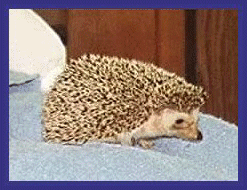


The White-bellied Hedgehog is a mammal with an armor of spikes which it uses to protect itself. This one is the most commonly used hedgehog pet used in the United States. The hedgehog's body can be 7 to 9 inches long and the tail is about 1/2 inch long. They can weigh about 1/2 lb to 1 and 1/2 lbs (9 to 26 ounces). The upper body is covered with dark brown and whitish spines. The belly, face and legs are covered with soft fur. It has small eyes and a long snout. The upper jaws are longer than the lower. They are not related to porcupines. They are related to shrews and moles. They are commonly called hedgies.
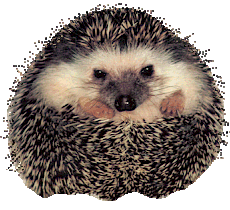
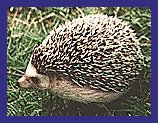
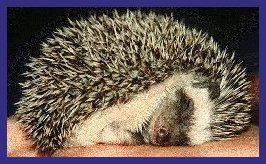
A hedgehog is a nocturnal animal, which means it sleeps during the day and is awake and active during the night. During the winter is passes into a state of hibernation when it rolls up into a ball and makes a nest. The nest is made of dry leaves, tucked under bushes, a pile of logs, in parks, or in a potting shed. It will awaken on warm days to feed and drink water. It will hibernate from November to the end of March.
Between the months of April and September the female gives birth to about 1 to 10 young, with 4-6 being the usual number. These babies are called hoglets. The hoglets are born white and the tiny spines are covered with a membrane coating. This shrivels away within hours after being born. At birth the spines are soft, but soon harden to offer protection from predators. The males do not help in caring for the hoglets.
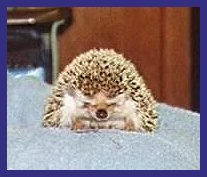
The hedgie is common in parks, woods, forest, gardens, and farmlands in England and Ireland. They are protected under the Wildlife and Countryside Act and may not be trapped. The biggest threat to the hedgie is the loss of its habitat and chemicals being used in countryside gardens. The poison gets into the food chain. As the hedgehogs eat they become poisoned. In the wild hedgies live about 2 to 3 years. In captivity hedgies can live up to 10 years old.
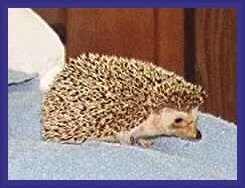
Hedgehogs can make sounds which vary from sneezing to snorting to clicking. When they are frightened they squeal. They make a purring sound when something interests them. Hedgehogs are nocturnal creatures and do not mind being left alone for long periods of time. They prefer to sleep during the day and will become active in the evening. Your hedgehog should be fed in the evenings around 6PM because they eat at night. Check their food and add more before you go to bed. Hedgies like pine and cypress mulch for their bedding and a water bottle should be available at all times. Hedgies will eat cat food, but special food for them can be bought at pet food stores.
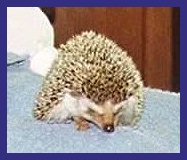
There are many reasons why people like to have a hedgehog for a pet.
They are small and very quite animals.
Their little faces can be very expressive and they are interesting to look at.
They are not aggressive and have
no body odor. They are naturally curious and once they trust you they can be very playful.
They are easy pets to feed and if handled over time they will not roll up into a
ball of spines.
Thank you for visiting!
E-mail comments to
[email protected]
Please visit the
Elementary West Homepage
Resources:
Internet sites on Hedgehogs